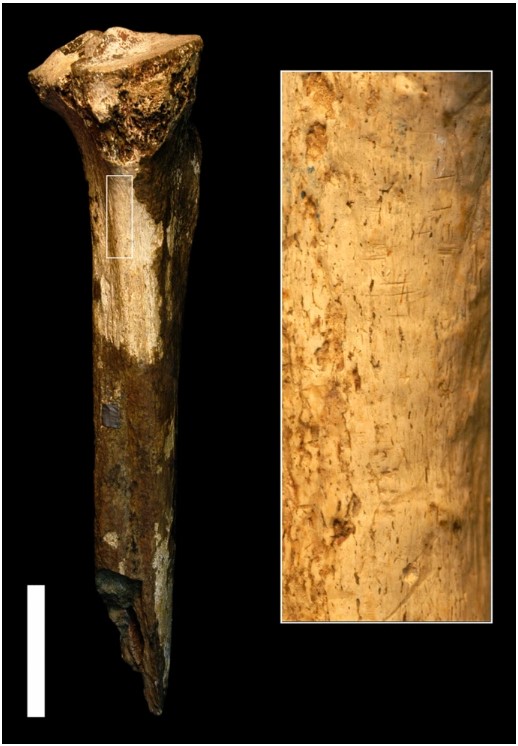We talk about violence a lot today because it is relatively rare compared to the past. In prior centuries, life had much less value. In the US prior to the arrival of Europeans, shocking violence was far more common than after colonization. Crimes against each other have been mollified over time, to where now people chastise each other over virtual microaggressions, whereas in the past actual aggression would have been dismissed until it led to death and the deceased was someone important.
The inference of early cannibalism derives from nine cut marks on a shin bone, in the same direction, where calf muscle attaches to bone. It's just a shin bone that was found by anthropologist Mary Leakey in 1970 during a Kenya expedition, so it is unknown which precursor to humans it was but an educated guess is Paranthropus boisei or Homo erectus. The study used molds of the cut marks to compare them to bites and tools and say nine were created by stone tools, while two others were an animal.

Complete view of tibia (KNM-ER 741) and magnified area that shows cut marks perpendicular to the long axis of the specimen. Scale = 4 cm. Credit: 10.1038/s41598-023-35702-7
Cannibalism is taboo today but at least 1,300 other species have no problem eating each other. Neanderthals and Homo sapiens did it routinely in the past, because the natural world is one of feast and famine, predator and prey. If you were in a food-rich area, someone bigger and stronger would try to take it. Agriculture - farming and domesticated livestock - changed all that to where now everyone can afford food. During bleak times, others like us were better than nothing.
As agriculture advanced, life and death became more ritualistic, first by ceremony if someone else was eaten, and then later by burial or immolation.
Reference: Pobiner, B., Pante, M.&Keevil, T. Early Pleistocene cut marked hominin fossil from Koobi Fora, Kenya. Sci Rep 13, 9896 (2023). https://doi.org/10.1038/s41598-023-35702-7





Comments